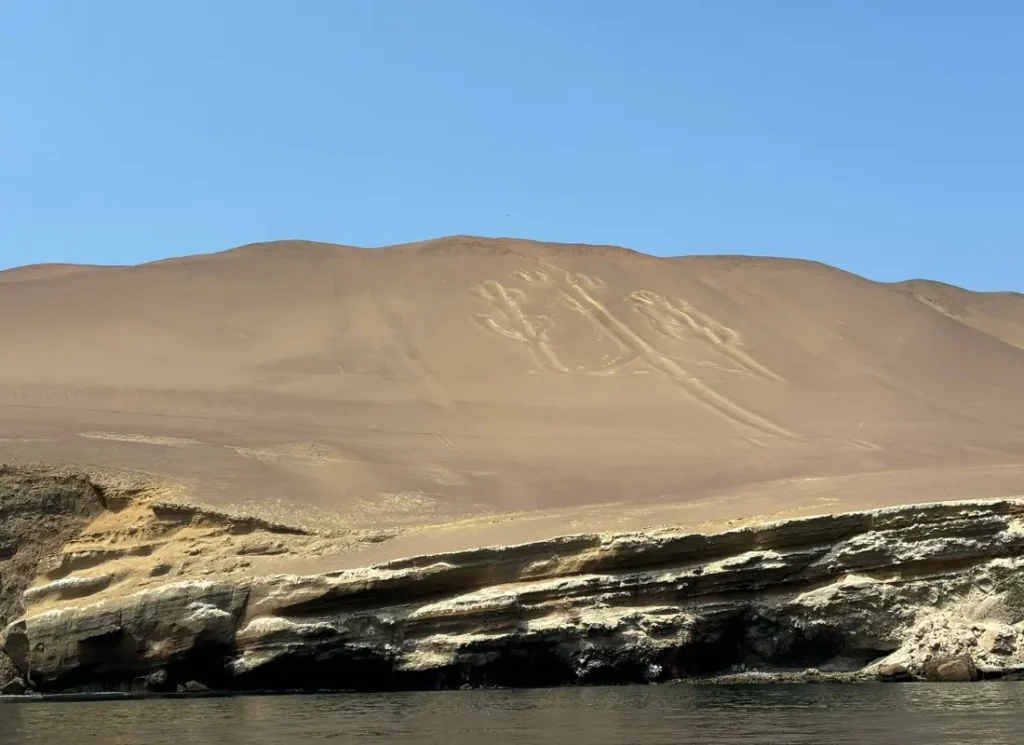It wasn’t until I arrived in Latin America that people started telling me that I was brave for going to Peru alone. It was, specifically, when I was in Costa Rica, hanging out with the kinds of travellers that are ready to dip their toe into travelling in Latin America but aren’t quite ready to dive in head first. Some people there told me I was totally crazy for wanting to travel alone in Peru, but here I am – I did it, and I’m still alive.
Peru was my second stop in South America after Colombia. I flew straight from Medellin to Lima (check out this guide on how to get from Lima Airport to Miraflores), and then bussed around Peru until I ended up in Bolivia.
Whilst I didn’t get the chance to visit northern Peru, I heard a lot about it and I had done my research in case I was lucky enough to go. This list is based on the insanely thorough research that was kept safely in the notes app on my phone, and contains both the sights I did and didn’t visit. Everyone has probably heard about the most famous landmarks in Peru, from the snow-capped peaks of the Andes Mountains to the famous Incan archaeological sites. But what else is there to see in Peru? What are some of the lesser known sights to see?
Let me introduce you!
P.S. I’ve sorted this list into general areas of Peru to help you map out where they are and plan your trip.
Close to Lima
Marcahuasi
Marcahuasi is a stone forest about 80 kilometers east of Lima. These ancient ruins, known for rock formations that resemble animals and human faces, offer stunning panoramic views and are a popular destination for hikers.
The Sacred City of Caral
The Sacred City of Caral, north of Lima, is one of the oldest civilizations in the Americas, dating back over 5,000 years. This archaeological site features large pyramids and sunken plazas, giving an insight into what life was like in early urban development in ancient Peru.
Lomas de Lucumo
Lomas de Lucumo is a natural reserve just outside of Lima. It’s a perfect spot for hiking and spotting unique flora and fauna, including the famous mist-fed vegetation that thrives in this desert environment.
🇵🇪 More about Peru: How to Get from Lima Airport to Miraflores
South of Peru
Nazca Lines
The Nazca Lines are a series of giant geoglyphs etched into the desert floor in southern Peru. These mysterious figures, best viewed from the air by a short flight, depict animals, plants, and geometric shapes. Their purpose remains a mystery and is a hot subject of debate among archaeologists.
Colca Canyon
Colca Canyon, one of the world’s deepest canyons, is located in southern Peru. It is most typically accessed from the city of Arequipa, and you can hike it either with a guided tour or independently. It offers breathtaking views and opportunities to see the rare Andean Condor soaring in their natural habitat. The canyon is also rich in cultural history, with terraced agriculture that dates back to pre-Inca times.
Lake Titicaca
Lake Titicaca, the highest navigable lake in the world, is on the border between Peru and Bolivia. Known for its being the largest lake this high above sea level and the unique cultures of its floating Uros islands, Lake Titicaca is a must-visit destination for anyone exploring southern Peru.
Rainbow Mountain
Rainbow Mountain, or Vinicunca, is a multi-colored mountain located in the Peruvian Andes and is one of the most popular natural landmarks to visit in Peru. Its vibrant stripes of colors, created by mineral deposits, make it a popular destination for hikers and nature enthusiasts. The trek to the summit offers breathtaking (literally, at 5,200 metres above sea level) views of the surrounding mountains.
Ballestas Islands
The Ballestas Islands, often referred to as the “Galapagos of Peru,” are a group of rocky islands off the coast of Paracas, and are part of Paracas Natural Reserve. They are home to an incredible range of wildlife, including sea lions, penguins, and countless species of birds. This ecosystem is only available by boat tour, but well worth the ride.
Sand Dunes of Huacachina
The sand dunes of Huacachina, a desert oasis a short ride from the city of Ica, offer a unique desert experience. The towering dunes are perfect for sandboarding, sand-skiing, and dune buggy adventures, while the picturesque lagoon of Huacachina provides a serene spot to relax.
Basilica Cathedral of Arequipa
The Basilica Cathedral of Arequipa, located in the “White City” of Arequipa’s main square, is a stunning example of colonial architecture. Built from white volcanic stone, the cathedral is not only a place of worship but also a symbol of Arequipa’s rich history and cultural heritage.
🇵🇪 More about Peru: Your guide to Planning a Peru Itinerary
📍Book: Tours in the South of Peru
*some links in this article are affiliate links
Close to Cusco
Machu Picchu
The iconic Machu Picchu, the ancient city of the Incan empire, is one of the most visited historical sites in the world. Located high in the Peruvian Andes, this UNESCO World Heritage site offers a fascinating glimpse into Incan civilization, with its well-preserved temples, terraces, and panoramic views. It can be a multi-day trek or a day trip from Cusco, but make sure to book well in advance!
Huayna Picchu
Huayna Picchu is the towering peak that rises above Machu Picchu and offers one of the most rewarding hikes in Peru. The steep and challenging trail leads to the summit, where visitors are rewarded with unparalleled views of the Machu Picchu ruins and the surrounding mountains.
Cusco Cathedral
Cusco Cathedral, in the main square (Plaza de Armas) of Cusco city, is built on the foundations of an Inca palace. The cathedral houses a collection of paintings, sculptures, and relics that showcase Cusco’s cultural history.
Twelve-Angled Stone
The Twelve-Angled Stone is a famous example of Inca stonework, in the historic centre of Cusco. I’m not going to tell you that it’s the most interesting thing in the world, but I went to see it when I was in Cusco and it is a fascinating testament to the skill of the Incas.
Sacsayhuamán
Sacsayhuamán is an Inca fortress overlooking Cusco. Known for its massive stone walls, some of which weigh over 100 tons, Sacsayhuamán is a testament to the skills and craftsmanship of the Inca civilization and offers panoramic views of the city below.
Banos Termales de Cocalmayo
The Cocalmayo Thermal Baths, or Banos Termales de Cocalmayo, is a set of natural hot springs located near the town of Santa Teresa, not far from Machu Picchu. These thermal baths are a perfect spot to relax and rejuvenate after trekking, surrounded by beautiful mountain scenery. They are a popular stop on the Salkantay Trek to Machu Picchu.
🇵🇪 More about Peru: A Full Itinerary for 7 Days in Peru
📍Book: Tours from Cusco
The Sacred Valley
Sacred Valley
The Sacred Valley, also known as the Urubamba Valley, is a region of great cultural and natural significance. Not far from Cusco, the valley is dotted with Inca ruins and traditional villages.
Pisac
Pisac is a charming town located in the Sacred Valley, famous for its well-preserved Inca ruins and vibrant market. The archaeological site at Pisac includes terraces, temples, and a large ceremonial centre, all set against a stunning backdrop of mountains and valleys.
Ollantaytambo
Ollantaytambo is a historic town and Inca archaeological site in the Sacred Valley known for its massive stone terraces and fortress. Ollantaytambo served as a stronghold during the Spanish conquest and remains one of the best-preserved Inca sites in Peru.
📍Book: Sacred Valley Tours
North of Peru
Chan Chan
Chan Chan is the largest adobe city in the world and was once the capital of the ancient Chimú Kingdom. Located near Trujillo, this archaeological site features intricate carvings and vast plazas, providing a glimpse into the life of one of Peru’s most powerful pre-Inca civilizations.
Cordillera Blanca
The Cordillera Blanca is a mountain range in northern Peru, known for its snow-capped peaks and stunning scenery. It is a paradise for trekkers and climbers, offering access to some of the highest and most beautiful mountains in the Andes, including Huascarán, the highest peak in Peru.
Gocta Falls
Gocta Falls, one of the tallest waterfalls in the world, is located in the Amazonas region of northern Peru. The two-tiered waterfall, surrounded by lush cloud forests, is accessible via a scenic hike and offers a breathtaking sight, especially during the rainy season.
Kuelap
Kuelap is an ancient fortress built by the Chachapoya civilization in northern Peru. Perched on a mountain ridge, the site features massive stone walls and hundreds of circular buildings, offering a fascinating glimpse into the region’s pre-Inca history.
Manu National Park
Manu National Park, a UNESCO World Heritage site, is one of the most biodiverse areas on the planet. Located in southeastern Peru, the park spans multiple ecosystems, from Andean highlands to tropical rainforests, and is home to an incredible variety of wildlife, including jaguars, giant otters, and over a thousand bird species.

